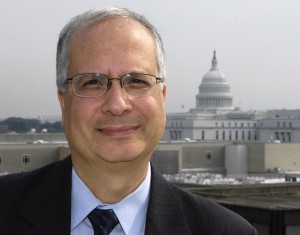By Ed Hoffman
What is the most likely culprit in failures to meet grand societal challenges? How do we understand and address the increasing complexity of missions? To rephrase those questions in more general terms: What poses the greatest risk to projects?
 A lot of observation and reading seems to suggest that project risk exists within the boundaries of technology, cost, and time. Certainly this is how professional project managers are schooled. The project management profession equips its practitioners with the competence to rationally manage technical, schedule, and cost risks. Project management literature and training focus extensively on those areas.
A lot of observation and reading seems to suggest that project risk exists within the boundaries of technology, cost, and time. Certainly this is how professional project managers are schooled. The project management profession equips its practitioners with the competence to rationally manage technical, schedule, and cost risks. Project management literature and training focus extensively on those areas.
Yet it seems increasingly obvious that the most likely cause of project death is the social dimension.
Look at the complexities that projects encounter. Technical innovation and the interdependencies among technologies lead to technical complexity that can influence budget and schedule. But project teams have a relatively sophisticated set of tools and training to deal with technical issues. Organizational complexity stems from the interactions of the larger project team, including partners and suppliers. Strategic complexity resides in the projects sociopolitical context, and primarily concerns stakeholders and funding. Projects today experience the dramatic and constant pressure of social and political demands—compromised cost estimates resulting from the need to win support, complicated partnerships, challenges from external budgetary and political stakeholders, and changes in popular support.
There are many people in many positions who determine whether a program lives or dies, but the field of project management largely ignores all but the technical and cost factors.
In a May 10, 2012, New York Review of Books article, Steven Weinberg warns of the demise of big science projects largely because of these factors. He points to increasing challenges to large programs such as the (canceled) Superconducting Super Collider, the James Webb Space Telescope, and the International Space Station and concludes that “big science” is entering a period of crisis. The same challenges affect every large project that relies on continuing public and political support.
We have entered a world that demands social, strategic, and political sophistication. It is not enough to sell a project once and assume it will survive, and not enough to address only technical, cost, and schedule issues.
Instead, projects—whether in science, exploration, construction, or the Olympic Games—need to have a strong social network of people committed to their conception, design, development, implementation, and conclusion. Organizations, leaders, and teams in the business of creating and delivering large-scale projects will need to recognize that social risk has become the biggest project risk, and that a critical part of their job is generating and maintaining a large community of people who follow and support their missions.
Social skills are needed to gather multidisciplinary knowledge and expertise that is distributed around the world. Necessary social skills also include effective communication to inform and educate a diverse stakeholder community. Overcoming the social risks projects face calls for widespread efforts to transform projects from circumscribed communities to networks of advocates involving both internal team members and a broader audience of external stakeholders.
More Articles by Ed Hoffman
- From The Academy Director—NASA’s Knowledge Imperative (ASK 46)
- From The Academy Director—The Appeal of Space (ASK 45)
- From The Academy Director—Action at the Boundaries (ASK 44)
- On the Importance of Values (ASK 43)
- From the Academy Director—2011 Trends in Project Management (ASK 42)
- View More Articles






